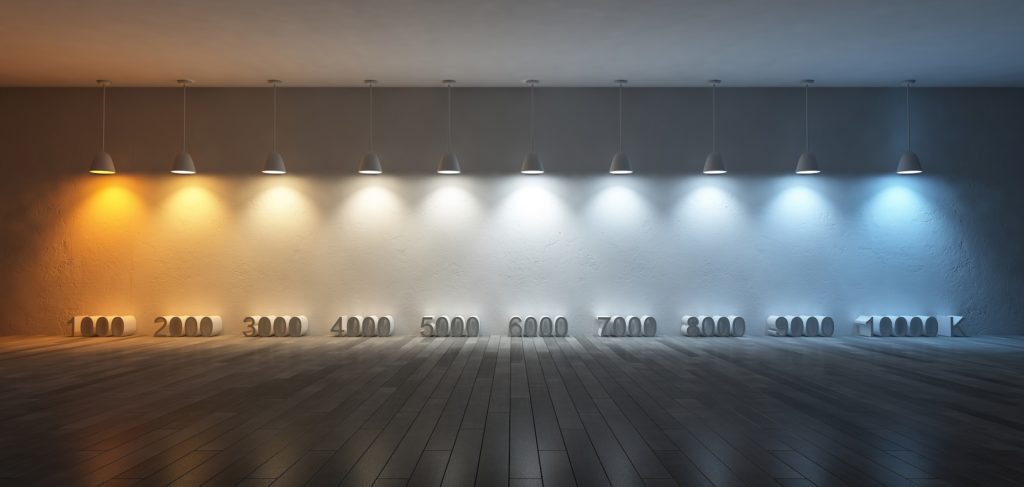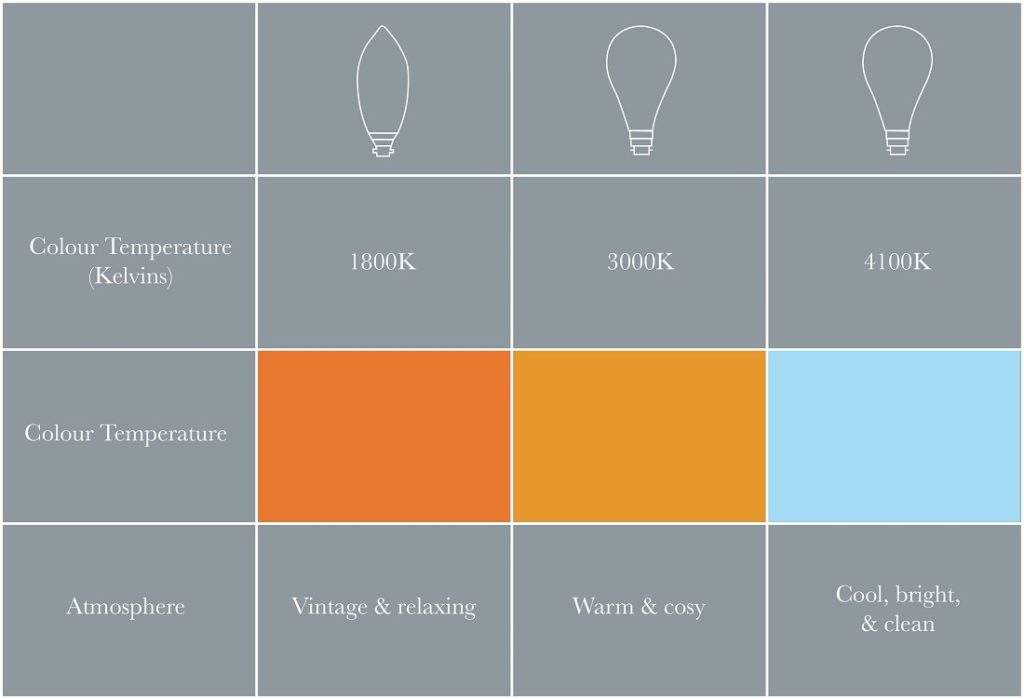Guide to Lighting Colour Temperature
Guide to Lighting Colour Temperature
If you've been looking for light bulbs, or have been trying to decide how to best light your room, you'll have no doubt noticed that some bulbs give off a yellow/orange coloured light, whereas others give off a blue/white light. Some have a natural daylight feel, whilst others have a sunset or candle-like glow. This is due to different colour temperatures, and choosing the correct colour temperature is a very important aspect of lighting your home, office, bar, restaurant or any other space.
Light bulbs come with a colour temperature rating, which you may have already seen. This is in the format of a 4 or 5-digit number, followed by a K. For example, 3000K or 4100K. The colour temperature of a bulb describes the appearance of its light. White is the common colour, but that can vary from a warm white (which is more of an orangey colour) to a cool white (which is more of a bluey white colour).

Colour temperature is measured in degrees Kelvin on a scale from 1000 to 10000. When you see a number like 2800K, the 'K' stands for Kelvins. Unlike regular temperature, a low colour temperature gives of a warmer (orange) light and a high colour temperature gives off a cool daylight white (blue/white).

Traditional incandescent bulbs tend to be closer to the temperature of candlelight, which sits around 2000K and sunlight sits around 6000k. As you can see in the pictures below, the colour of the light changes as the colour temperature changes and this can have an effect on the overall look of the room.

